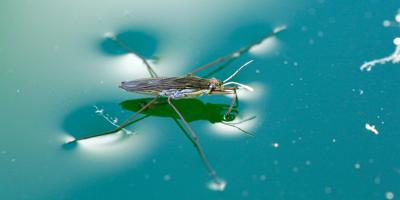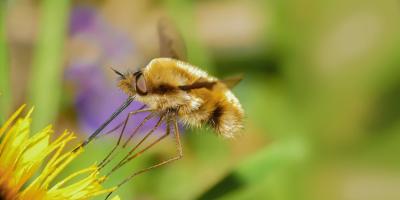Are Snow Fleas Really A Thing?

Have you ever noticed groups of jumping specks in the snow? These little guys are often referred to as snow fleas because they are only highly visible in the winter against the white backdrop of snow. Snow fleas are actually not harmful, nor are they really fleas. These tiny insects are actually a species of Springtails, which come by their name rightly for their distinctive jumping ability. They also have some pretty amazing traits that allow them to survive in the harshest and coldest climates in the world.
Snow fleas are best known for their incredible mobility. Since they’re only the size of a period at the end of a sentence, (12 point font, obviously) you would barely be able to see them if they were moving against a white backdrop. They don’t use their legs to jump like other insects such as grasshoppers, but a small tail-like appendage on their exoskeleton composed of a rubbery substance called resilin. They can jump more than 100 times their body length.
Snow Fleas Are The Good Guys
Generally, it’s good to have snow fleas in your garden, and even though you can’t see them, they’re there all year round. As mentioned earlier, snow fleas are not real fleas. They aren’t even technically insects because of their body shape and eye type, however they are closely related. They eat fungus, other insects, and organic matter to create new, healthy soil for the ecosystem. Snow fleas are not typically known to cause damage to plants, and will make virtually any organic garden healthier. In a healthy ecosystem there can be up to 250 million snow fleas in one square acre.
Antifreeze Blood
While most other small insects and animals seem to go to sleep or even die off in the winter, snow fleas remain active. Snow fleas have been found in high altitudes and in Antarctica, where temperatures only reach 10 degrees Fahrenheit at the warmest.
Although they are technically cold-blooded, meaning their body temperature is connected to their physical surroundings, snow fleas manage to keep their blood in liquid form and prevent it from forming ice crystals. They do so through proteins in their bodies that work like antifreeze, just like the glucose-based substance in automobiles. Research has even shown that the snow flea’s antifreeze substance can be used for preserving human organsfor transplant.
If you’re curious to see the snow flea jump (in slow motion!) check out this YouTube video featuring the agile and resilient little guys keeping your garden healthy



